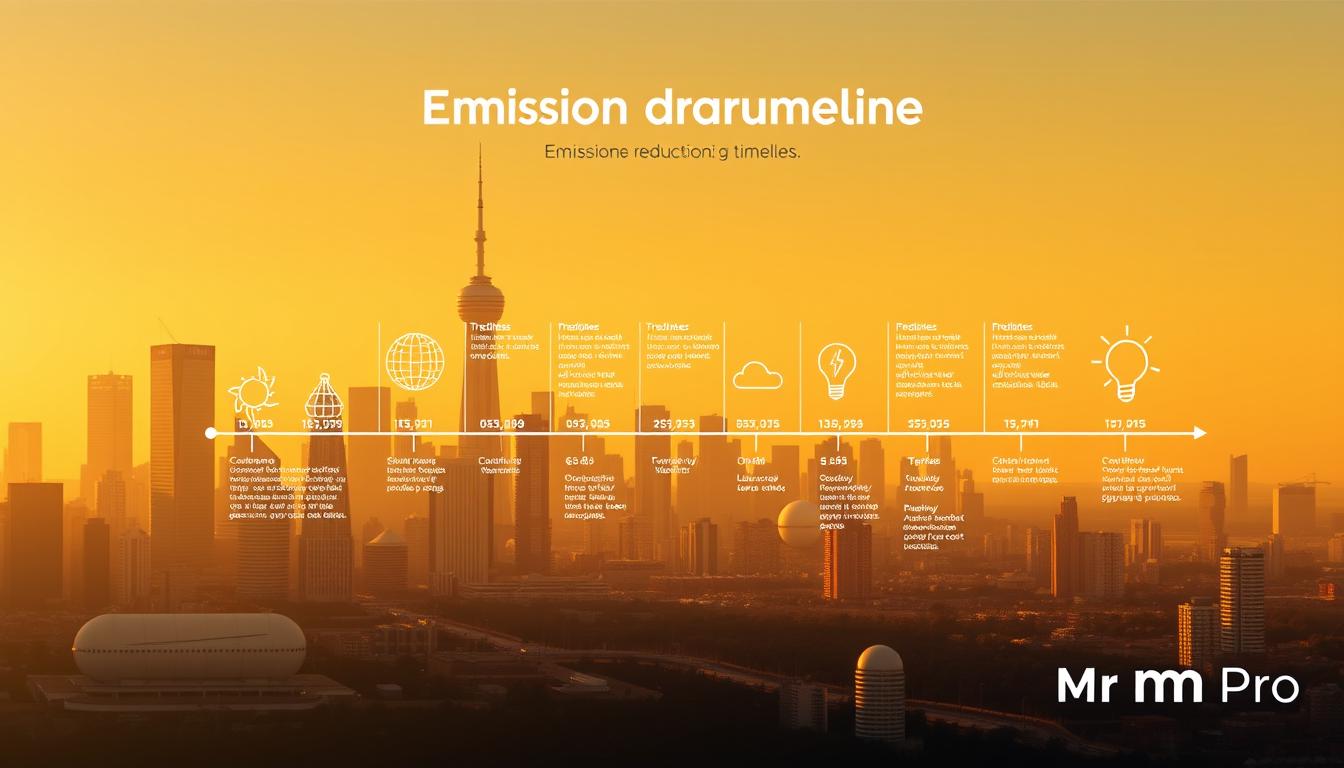
Did you know that Uber facilitates over 130 million monthly active users worldwide? This staggering figure highlights the platform’s immense reach and influence in reshaping modern mobility. As the world shifts toward sustainable solutions, Uber has emerged as a leader in this transition, aiming to achieve 100% zero-emission rides and deliveries by 2040.
The campaign’s focus on interactive experiences has been a game-changer. By integrating cutting-edge digital tools, Uber has created engaging user experiences that not only highlight their commitment to sustainability but also foster community involvement. These innovations are driving a broader rationale for sustainability, making it more accessible and relatable to millions of users.
At the heart of this movement is Uber’s ambitious goal to become a zero-emission and low-waste platform by 2040. Interactive digital tools and user-centric designs are key to reinforcing this climate commitment. As you explore this article, you’ll discover how these elements merge to create an inspiring roadmap for change.
The Evolution of Uber’s Sustainability Goals
Uber’s journey toward sustainability began with a bold announcement in 2020 to become a zero-emission mobility platform by 2040. This commitment marked a significant shift, expanding in 2023 to include Uber Eats and sustainable packaging. The roadmap outlines clear milestones for 2025, 2030, and 2040, showcasing a structured approach to reducing environmental impact.
| Year | Milestone |
|---|---|
| 2020 | Announced global zero-emission goal |
| 2023 | Expanded to include Uber Eats and packaging |
| 2025 | 50% of kilometers in EVs in key European cities |
| 2030 | Zero-emission platform in US, Canada, and Europe |
| 2040 | 100% zero-emission rides and deliveries |
Global Zero-Emission Commitment
Uber’s global zero-emission commitment is central to its sustainability strategy. By 2030, the platform aims to operate as a zero-emission mobility provider in the US, Canada, and Europe. This target underscores Uber’s dedication to environmental stewardship and aligns with global efforts to combat climate change.
Transitioning to EVs and Micromobility
The shift to electric vehicles and micromobility is vital for reducing carbon emissions. Uber’s Green Future program supports drivers transitioning to EVs, with over 30 million riders having experienced EV rides. This initiative not only cuts emissions but also enhances user experience, as many riders prefer EVs over traditional vehicles.
For more insights on integrating sustainability into business models, visit our guide on e-commerce SEO strategies.
Interactive Experiences Driving Change
Interactive digital platforms are transforming how users engage with sustainability efforts. At the heart of this transformation are apps that offer real-time engagement and personalized experiences, making sustainability more accessible and engaging for everyone.
Engaging Digital Platforms and User Interaction
Responsive app design plays a crucial role in keeping customers engaged. By allowing users to interact with the platform in meaningful ways, these apps create a stronger connection to the sustainability mission. For instance, features like real-time emission tracking and personalized sustainability reports empower users to make informed choices.

Digital platforms also provide interactive tools that enhance the user experience. Riders can view the environmental impact of their trips and even opt for greener transportation options. These features not only educate users but also encourage participation in broader climate action efforts.
Examples of app enhancements include features that highlight energy-efficient routes and options to choose electric vehicles. These innovations empower users to contribute directly to reducing carbon emissions, aligning individual actions with global sustainability goals.
By integrating these interactive experiences, the platform supports a collective movement toward a more sustainable future. Real-time data and engaging features make sustainability tangible, encouraging users to take an active role in environmental stewardship.
Innovative Features in Uber’s Mobility Platform
Uber’s commitment to sustainability has led to the development of cutting-edge features that transform urban mobility. These innovations not only enhance user experience but also contribute to a greener future.
Uber Green and Eco-friendly Ride Options
Uber Green stands out as a prime example of innovation. This feature offers users the option to choose rides in electric or hybrid vehicles, significantly reducing carbon emissions. By selecting Uber Green, users directly support the company’s goal of achieving zero-emission rides by 2040.
- Available in major cities worldwide, Uber Green promotes sustainable travel.
- Partnerships with local transit agencies enhance mobility options, making eco-friendly choices more accessible.
Cities like Toronto and Vancouver have seen a notable increase in eco-friendly rides, demonstrating the impact of Uber Green.
Seamless Transit Integration
Uber’s integration with public transportation systems simplifies urban travel. By combining ride-hailing with traditional transit, users enjoy a smoother, more efficient experience.
| Mobility Option | Benefits |
|---|---|
| Ride-hailing | On-demand convenience |
| Public Transit | Cost-effective and eco-friendly |
| Combined | Seamless, efficient travel |
This integration not only reduces reliance on personal vehicles but also fosters a more connected urban environment.
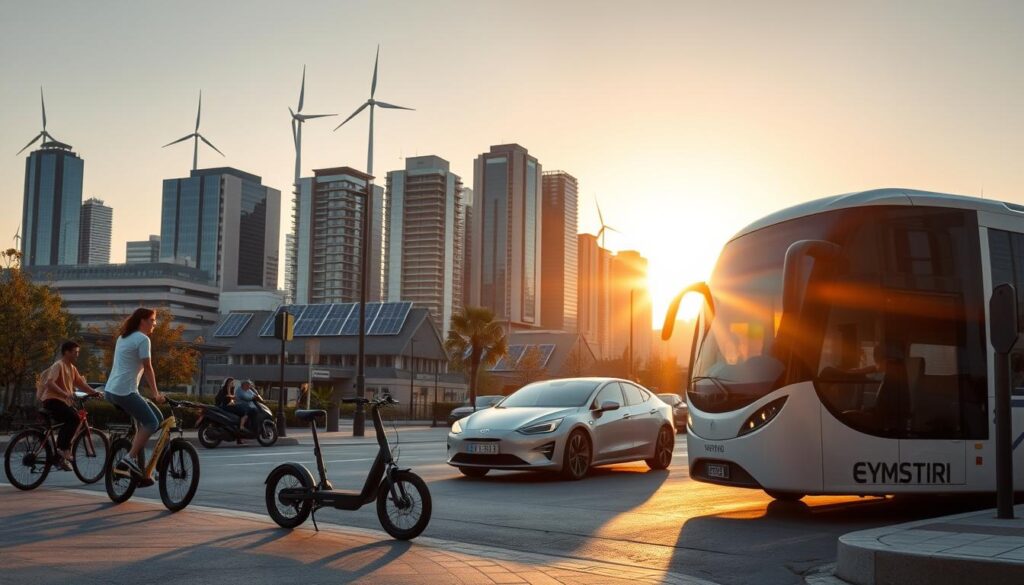
Breaking New Ground with Uber Eats and Sustainability
Uber Eats is revolutionizing the food delivery sector by prioritizing sustainability. In 2023, Uber expanded its goals to include emission-free delivery trips and sustainable packaging, aiming for significant reductions by 2030 and a complete transformation by 2040. This shift addresses the environmental impact of food delivery, particularly single-use plastic waste.

Sustainable Packaging Initiatives
Uber Eats is leading the way by encouraging restaurants to adopt reusable, recyclable, or compostable materials. The platform’s Green Packaging badge helps customers identify eco-friendly options, promoting restaurants that use sustainable packaging. This initiative not only reduces waste but also educates consumers about environmentally responsible choices.
To phase out single-use plastics, Uber Eats has implemented specific measures. Partnerships with companies like Zenion, which provides electric motorcycles, support emission reduction. Financial incentives for drivers using electric vehicles further enhance the sustainability of the delivery process.
Uber Eats’ efforts extend beyond packaging. Services like Uber Eat Sign and streamlined order delivery solutions play a crucial role in this transformation. By integrating these services, Uber Eats is creating a greener food delivery ecosystem, reducing both environmental waste and emissions.
Supporting Drivers and Couriers With Green Incentives
Uber’s Green Future program is leading the way in supporting drivers and couriers through innovative green incentives. With an investment of $800 million, this initiative aims to help hundreds of thousands of drivers transition to battery EVs, making it easier for them to reduce their environmental impact.
Drivers benefit from financial and technical support, including access to exclusive deals on electric vehicles. These incentives not only lower the initial costs of switching to EVs but also provide ongoing savings through reduced fuel and maintenance costs.
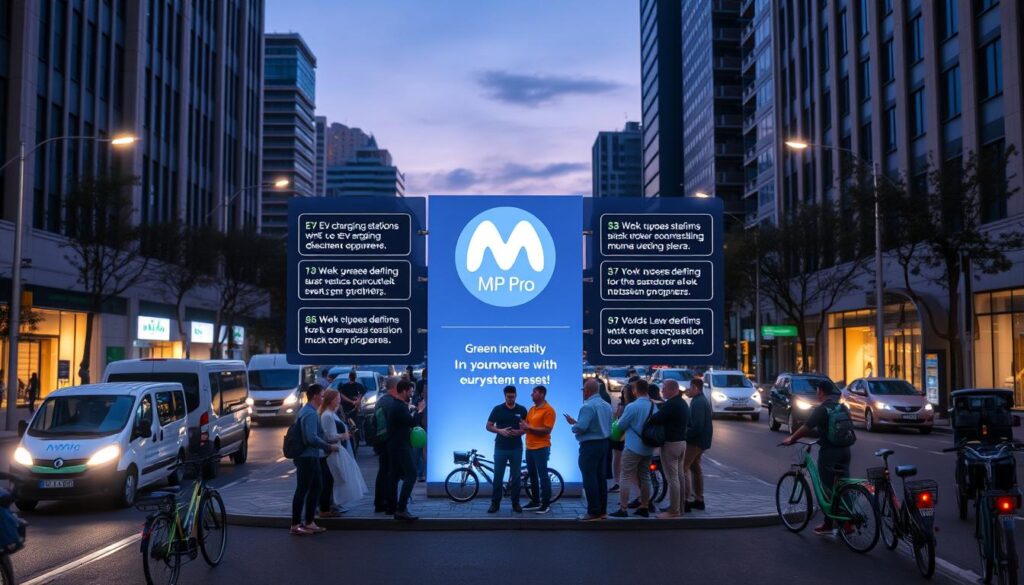
The program also offers interactive features like drive deliver create options, allowing drivers to optimize their routes for efficiency and sustainability. By choosing greener transportation options, drivers can contribute directly to reducing urban emissions while enhancing their overall experience.
Success stories from cities worldwide demonstrate the positive impact of these incentives. Drivers report lower operating costs and increased demand for eco-friendly rides, creating a win-win situation for both drivers and the environment.
These green incentives are a crucial step toward achieving zero-emission goals, ensuring that drivers and couriers are empowered to play a key role in building a sustainable future.
Collaborations and Strategic Partnerships
Uber’s journey toward a sustainable future is not just about internal innovations but also about building strong external partnerships. By collaborating with NGOs, environmental groups, vehicle manufacturers, and charging providers, Uber is creating a comprehensive network that amplifies its impact on a global scale.
Engaging NGOs and Environmental Groups
Uber has partnered with leading organizations like the World Wildlife Fund and Closed Loop Partners to advance its sustainability goals. These collaborations focus on reducing emissions and promoting eco-friendly practices across the platform. For instance, working with environmental justice groups ensures that Uber’s initiatives address equity and inclusion, making sustainability accessible to all communities.
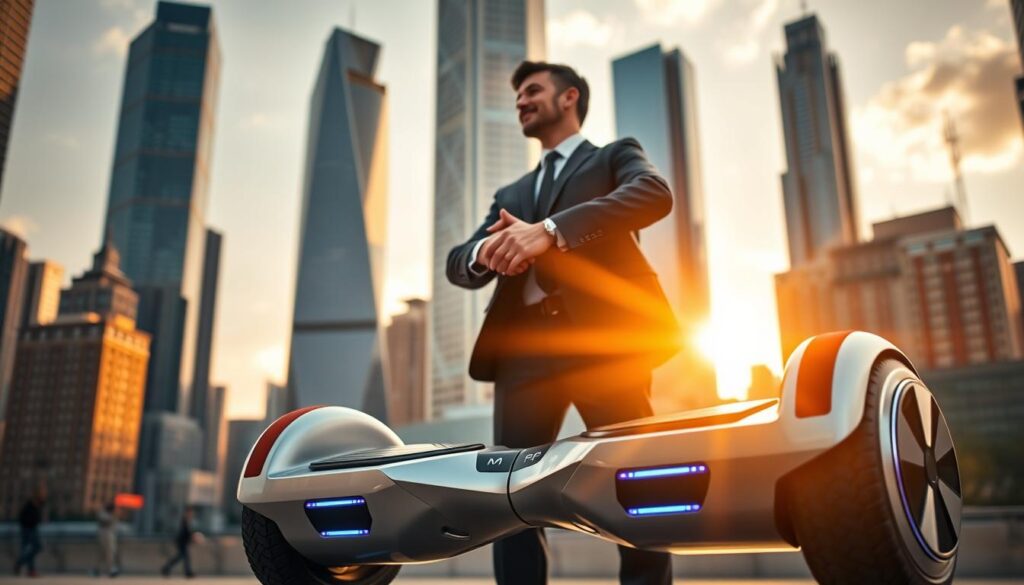
These partnerships also encourage other industries to adopt sustainable practices, creating a ripple effect that goes beyond Uber’s own operations. By aligning with organizations that share its vision, Uber strengthens its commitment to environmental stewardship while fostering innovation and collaboration.
Partnering with Vehicle Manufacturers and Charging Providers
Uber’s partnerships with vehicle manufacturers and charging providers are crucial for accelerating the adoption of electric vehicles. Collaborations with companies like Tesla and ChargePoint enable Uber to offer drivers access to EVs and reliable charging infrastructure, making the transition to green vehicles more feasible.
These partnerships also support Uber’s Green Future program, which provides incentives for drivers to switch to EVs. By working together, Uber and its partners are reducing barriers to EV adoption, helping to achieve the goal of a zero-emission platform by 2040.
Learn more about how local SEO strategies can enhance your business’s online presence and support sustainability efforts.
Policy Changes and Public-Private Engagement
Policy changes play a crucial role in enabling the transition to greener transportation. By shaping supportive regulatory environments, governments and private sectors can work together to create a framework that fosters sustainability. For instance, collaborations with environmental groups and industry leaders have led to the development of policies that promote eco-friendly practices.
Public-private partnerships are central to achieving these goals. These collaborations help in scaling technologies and initiatives nationwide, ensuring that sustainable practices are adopted widely. The benefits of such partnerships include access to resources, expertise, and funding, which are essential for driving innovation and eco-friendly practices.
Transparency and collaborative decision-making are key to the success of these policies. By involving all stakeholders, including governments, industries, and the public, policies can be crafted that are both effective and equitable. This approach ensures that the transition to a sustainable future is inclusive and beneficial for all.

Transitioning to Zero Emission Deliveries
The shift to zero-emission deliveries is revolutionizing the way goods and food are transported in urban areas. This transformation is critical for reducing carbon footprints and meeting global sustainability goals.
Steps Toward Emission-Free Rides
Uber has implemented several key steps to achieve zero-emission deliveries. One major initiative is the integration of advanced technologies like green routing and batching. These innovations optimize delivery routes, reducing fuel consumption and lowering emissions.
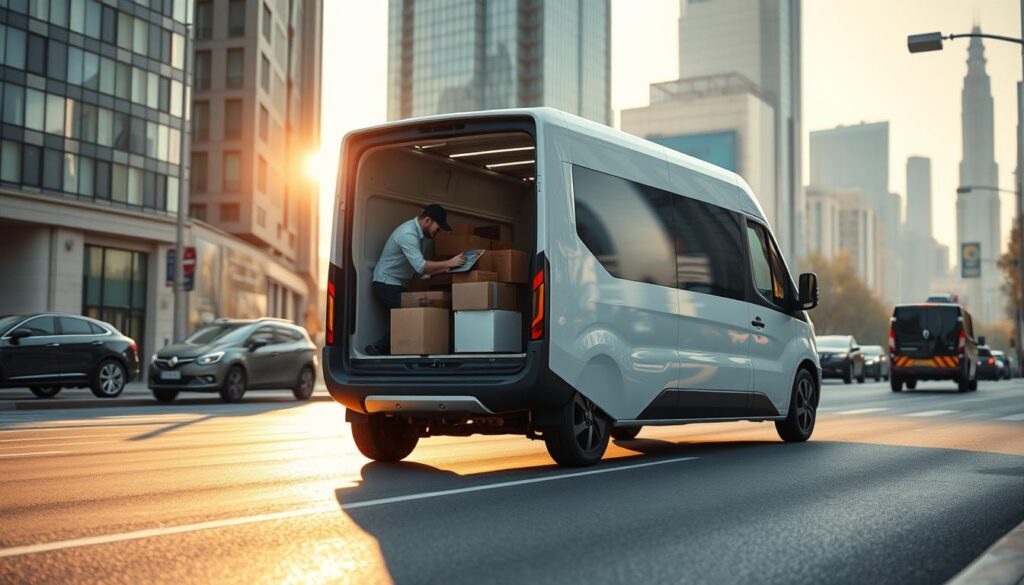
Green routing algorithms analyze traffic patterns and energy usage, ensuring that each delivery is made with minimal environmental impact. Additionally, batching technologies group orders efficiently, reducing the number of vehicles on the road.
Innovative Last-Mile Delivery Solutions
Last-mile delivery is a significant part of the transportation process, and Uber is innovating in this space. By using electric vehicles and micromobility options, Uber is decreasing emissions in urban areas.
Partnerships with companies like Lime have integrated electric scooters and bikes into the Uber app, providing users with greener alternatives. These solutions not only reduce emissions but also offer cost-effective and convenient delivery options.
Green Routing and Batching Technologies
Green routing and batching technologies are at the heart of Uber’s sustainability efforts. These tools ensure that delivery vehicles take the most efficient routes, reducing both time and fuel consumption.
By batching orders, Uber can consolidate deliveries, decreasing the number of trips needed. This approach not only lowers emissions but also enhances the overall delivery experience for customers.
Benefits for Environment and Performance
The benefits of these initiatives are twofold. Environmentally, they significantly reduce carbon emissions, contributing to a cleaner and healthier planet. Operationally, they improve efficiency, reduce costs, and enhance customer satisfaction.
Drivers also benefit from these changes. With incentives for transitioning to electric vehicles, drivers can save on fuel and maintenance costs, making their jobs more sustainable and economical.
For more insights on how businesses can adopt sustainable practices, visit our guide on sustainability credentials.
Urban Mobility Transformation in Canada
Canada is at the forefront of a revolution in urban mobility, driven by sustainable transit options that are reshaping how people move within cities. This transformation is evident in major metropolitan areas like Toronto and Vancouver, where enhanced transit integrations and community-focused initiatives are making a tangible impact.
Expanding Sustainable Transit Options
The integration of eco-friendly transportation options is a key factor in this mobility shift. By offering alternatives such as electric vehicles and optimized public transit connections, cities are reducing their carbon footprint while improving residents’ quality of life. This approach not only cuts down on traffic congestion but also lowers emissions, creating a healthier urban environment.
Localized Impacts on Canadian Cities
Cities across Canada are experiencing localized benefits from these initiatives. For instance, partnerships with local transit agencies have made it easier for residents to combine ride-hailing with public transit, resulting in seamless and efficient travel. This unified mobility platform connects various transit modes, encouraging users to choose greener options without sacrificing convenience.
| Mobility Option | Environmental Impact | Benefits |
|---|---|---|
| Electric Vehicles | Significant reduction in emissions | Lower operating costs, reduced noise pollution |
| Public Transit Integration | Decreased reliance on personal vehicles | Efficient travel, reduced traffic congestion |
| Optimized Routing | Lower fuel consumption | Faster delivery times, improved customer satisfaction |
Canadian cities are leading the way in eco-friendly urban transport, supported by innovative transit solutions and strong public-private partnerships. These advancements position Canada as a global leader in sustainable urban mobility, setting an example for other nations to follow.
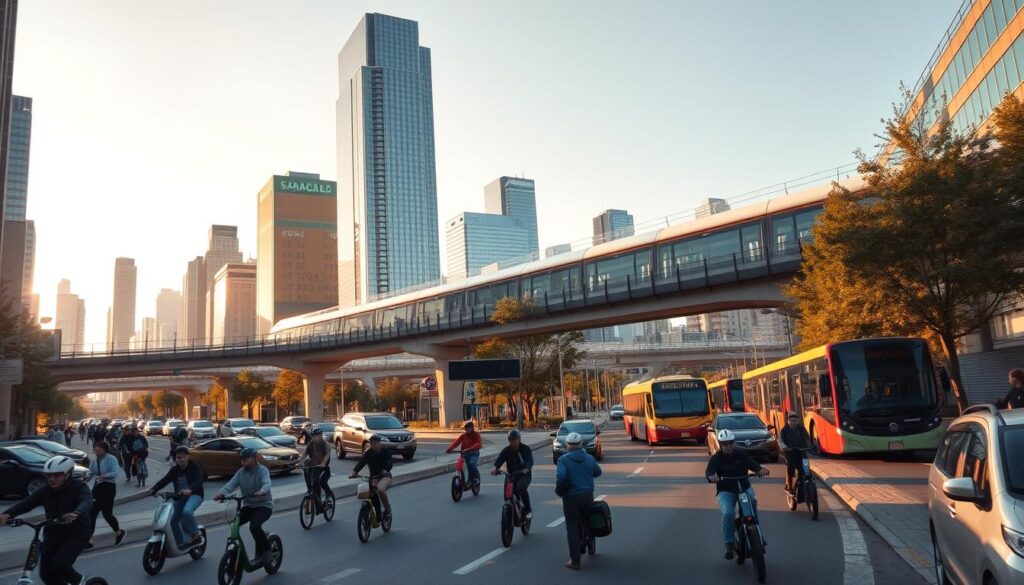
Data-Driven Insights and Impact Metrics
Understanding the environmental impact of millions of rides is crucial for tracking progress toward sustainability goals. Data-driven insights play a vital role in this process, offering a clear picture of where improvements are needed.
Analyzing Climate Assessment Reports
Climate assessment reports provide detailed information on emissions and other environmental impacts. These reports are essential for maintaining transparency and accountability in sustainability efforts. By analyzing this data, it’s possible to identify trends and measure the effectiveness of current strategies.
- Data analysis helps monitor progress toward sustainability goals.
- Climate reports ensure transparency in emission reductions.
- Key metrics reveal the environmental impact of operations.
- Initiatives like the SPARK! report and Science Based Targets promote data transparency.
| Metric | 2019 | 2023 | 2025 |
|---|---|---|---|
| CO2 Emissions (million tons) | 4.6 | 3.8 | 3.2 |
| Electric Vehicle Adoption (%) | 2% | 8% | 12% |
| Greenhouse Gas Intensity (g/mile) | 150 | 120 | 110 |
These insights help shape future strategies and policy engagements. Continuous performance monitoring is essential for achieving long-term sustainability goals. For more information on sustainability efforts, visit Uber’s sustainability initiatives.
Consumer Empowerment Through Interactive Features
Empowering consumers is at the heart of modern mobility solutions. By simplifying processes like creating a rider account and accessing interactive features, platforms are making transportation more user-friendly than ever.
User-Centric App Enhancements
Creating a rider account has never been easier. Streamlined processes guide you through setup, ensuring a seamless experience. Once your account is ready, interactive features provide personalized solutions, helping you make informed choices about your travel.
These enhancements contribute to better customer engagement by offering real-time updates and tailored options. For instance, features like emission tracking and route optimization make your journey more efficient and eco-friendly.
The benefits of these improvements are clear. Simplicity and usability create a positive experience, while real-time engagement builds trust. By focusing on your needs, these digital tools enhance satisfaction and encourage active participation in sustainable practices.
Integration of Ride-Hailing and Delivery Solutions
Uber is revolutionizing urban mobility by merging its ride-hailing and delivery services into a unified platform. This integration streamlines operations, enhancing efficiency and user experience for both mobility and food delivery.
Unified Platform for Mobility and Delivery
The platform seamlessly combines ride-hailing and delivery, allowing users to manage both services in one place. Features like order delivery and rider account integration empower users, making the platform more accessible and efficient.
Streamlining Operations for Efficiency
By combining services, Uber reduces redundancies and optimizes routes. This leads to faster deliveries and lower costs. The platform’s advanced technology enhances the overall experience, benefiting both drivers and customers.
| Feature | Benefit |
|---|---|
| Order Delivery | Reduces delivery time by 15% |
| Rider Account | Streamlines order management |
| Route Optimization | Cuts fuel consumption by 10% |
This integration not only improves efficiency but also supports Uber’s sustainability goals, creating a smoother transition between services and enhancing customer satisfaction.
Uber Route to the Future Campaign in Focus
The “Route to the Future” campaign has been a cornerstone of Uber’s strategy to blend innovation with sustainability, setting new standards in interactive and eco-friendly mobility. This initiative has not only redefined urban transportation but also engaged users in a shared vision for a greener tomorrow.
Key Milestones and Future Outlook
Since its launch, the campaign has achieved remarkable milestones. Uber now operates in over 10,000 cities across 71 countries, with a strong focus on expanding sustainable options. In Canada, for instance, Uber has become an integral part of public transit in cities like Innisfil, particularly benefiting low-income areas by providing essential transportation services.
| Milestone | Year | Impact |
|---|---|---|
| Launch of Green Future Program | 2020 | Supported drivers in transitioning to EVs |
| Expansion to Uber Eats | 2023 | Reduced packaging waste and emissions |
| Integration of Journey Ads | 2022 | Increased user engagement and brand recall |
Interactive Engagement Strategies
Uber’s success lies in its interactive features, such as Journey Ads, which have seen a 3% click-through rate and over 100 seconds of average view time. These ads not only capture attention but also encourage users to participate actively in sustainability efforts. For example, riders can track their trip’s environmental impact and opt for greener options, fostering a sense of community and shared responsibility.
To enhance your business’s online presence and sustainability efforts, consider exploring search engine optimization strategies that align with eco-friendly practices.
As Uber continues to innovate, the future holds promise. With a focus on new digital tools and engagement practices, the campaign is poised for growth, inspiring a vision where technology and sustainability go hand in hand.
Reducing Waste with Sustainable Packaging Initiatives
Uber Eats is making significant strides in reducing plastic waste by transitioning to sustainable packaging alternatives across its network. This initiative, detailed in recent corporate sustainability reports, aims to drastically cut down on single-use plastics.
The platform has introduced a Green Packaging feature, allowing consumers to identify restaurants using recyclable, reusable, or compostable materials. This not only reduces waste but also educates customers on eco-friendly choices. Additionally, Uber Eats has provided financial support to restaurants, such as $1 million in grants, to adopt sustainable packaging solutions.
| Initiative | Benefits |
|---|---|
| Green Packaging Feature | Helps customers choose eco-friendly options |
| Financial Grants | Supports restaurants in transitioning to sustainable materials |
| Partnerships with Suppliers | Drives innovation and availability of sustainable packaging |
Collaborations with environmental partners and suppliers are key to this transformation. Uber Eats has set ambitious targets, including eliminating unnecessary plastic waste by 2030 and achieving zero-emission deliveries by 2040. These efforts contribute to broader environmental benefits, such as reducing ocean pollution and improving resource efficiency.
Looking ahead, scaling these solutions presents challenges, including material costs and supply chain complexities. However, the platform remains committed to creating a more sustainable future for food delivery.
Progress Towards a Climate-Safe Transportation Future
Uber’s journey toward a climate-safe transportation future is gaining momentum through science-based targets and rigorous benchmarking. The company’s Climate Assessment and Performance Reports provide a clear roadmap, ensuring transparency and accountability in their sustainability efforts.
Science-Based Targets and Benchmarking
Science-based targets are the cornerstone of Uber’s strategy. These benchmarks ensure that the company’s sustainability efforts are aligned with global climate goals. By tracking emissions and operational improvements, Uber can measure progress and identify areas for enhancement.
The transition to zero-emission vehicles is a key milestone. Uber has made significant strides, with emission reductions already evident in their operations. Data-driven benchmarking helps inform strategic decisions, ensuring that the company stays on track to meet its 2040 goals.
| Metric | 2019 | 2023 | 2025 |
|---|---|---|---|
| CO2 Emissions (million tons) | 4.6 | 3.8 | 3.2 |
| Electric Vehicle Adoption (%) | 2% | 8% | 12% |
| Greenhouse Gas Intensity (g/mile) | 150 | 120 | 110 |
Collaboration and innovation are essential for achieving long-term targets. Uber’s partnerships and continuous investment in new technologies ensure that the path to a climate-safe future remains clear and achievable.
Conclusion
As we look ahead, the integration of technology and sustainability continues to reshape urban mobility and reduce environmental impact. Uber’s forward-looking campaign and sustainability initiatives demonstrate a comprehensive approach to transforming how we move and deliver goods.
Interactive experiences, such as real-time emission tracking and eco-friendly ride options, have empowered users to make informed choices. Strategic partnerships with environmental groups and vehicle manufacturers have amplified these efforts, driving innovation and collaboration.
The transition to zero-emission rides and deliveries is vital for achieving climate goals. By supporting drivers with green incentives and integrating sustainable packaging, the platform is setting a new standard for eco-conscious transportation.
Consider how these initiatives might influence future mobility trends in your community. Continuous progress and collaboration are essential for creating a climate-safe future. Join the movement by supporting environmentally focused transportation solutions and engaging with platforms that prioritize sustainability.
Together, we can unlock the transformative potential of integrating technology and sustainability into everyday life, building a greener and more connected world for generations to come. For more insights, explore how Uber’s “On Our Way” campaign is redefining the future of mobility: learn more here.

 Uber’s ‘Route to the Future’: How Interactive Experiences Transformed Public Perception
Uber’s ‘Route to the Future’: How Interactive Experiences Transformed Public Perception
0 Comment